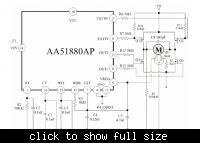neazoi
Advanced Member level 6
Hello,
Controlling a servo motor is easy with a microcontroller and there are many examples out there.
What I need to do is a little bit odd.
Assumming that there is already a mechanical system that is composed of servos and other mechanical parts, is there any way of programming what I want the system to do, by just moving the servos with my hands?
Then the system can repeat the movements that I have programmed it to do by the servos movement.
Is there any project/product out there, that could do this?
Controlling a servo motor is easy with a microcontroller and there are many examples out there.
What I need to do is a little bit odd.
Assumming that there is already a mechanical system that is composed of servos and other mechanical parts, is there any way of programming what I want the system to do, by just moving the servos with my hands?
Then the system can repeat the movements that I have programmed it to do by the servos movement.
Is there any project/product out there, that could do this?
